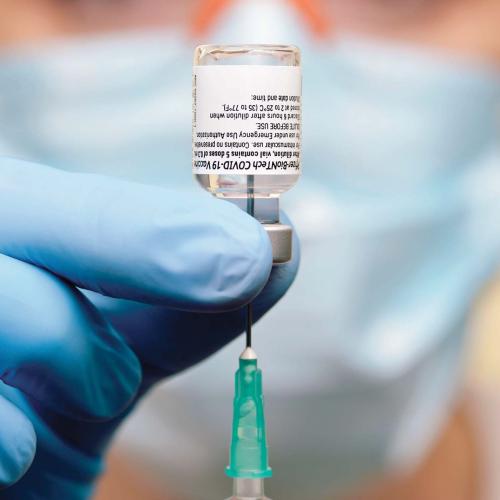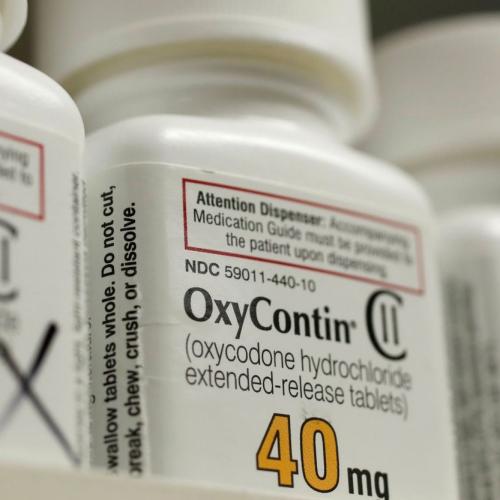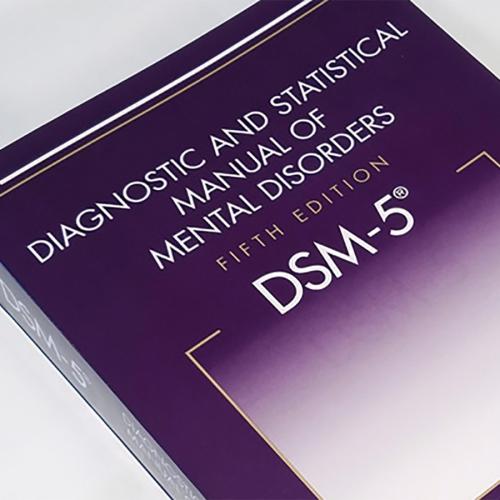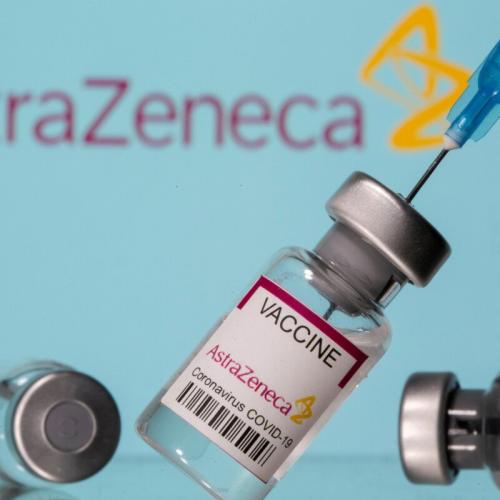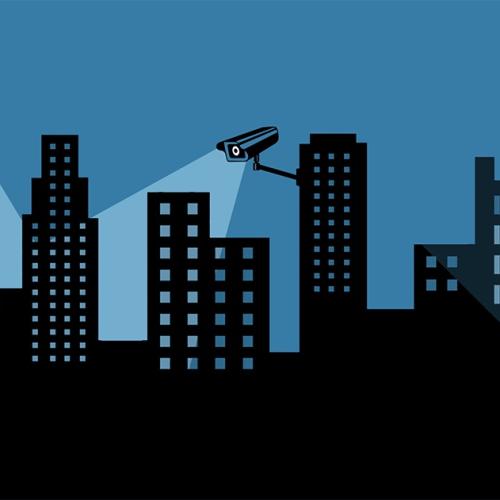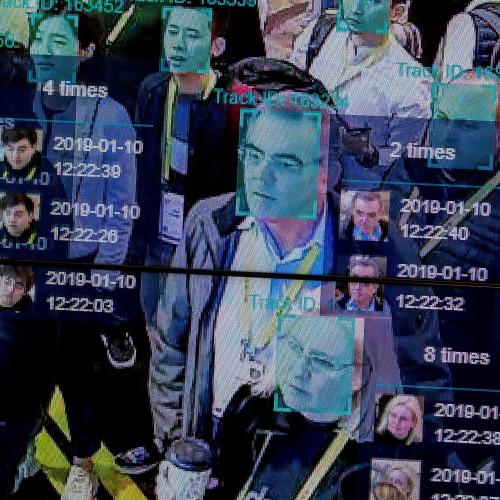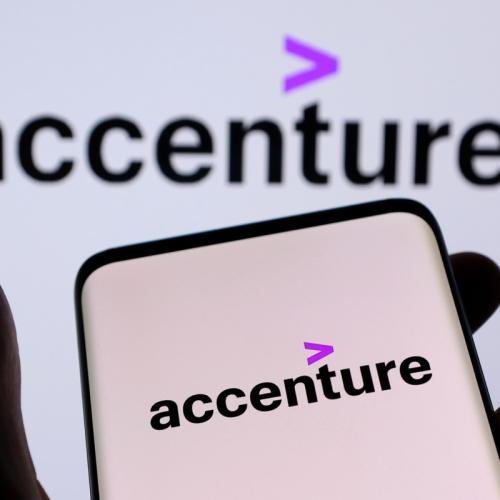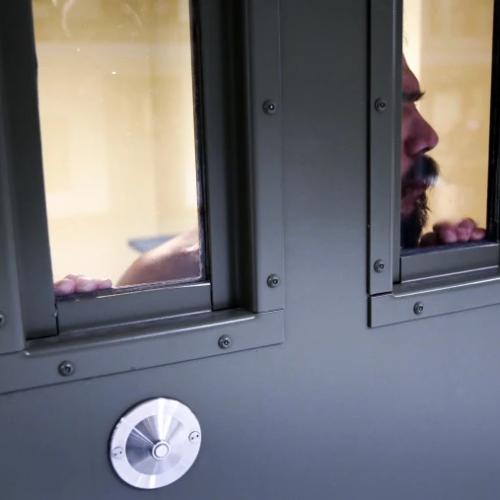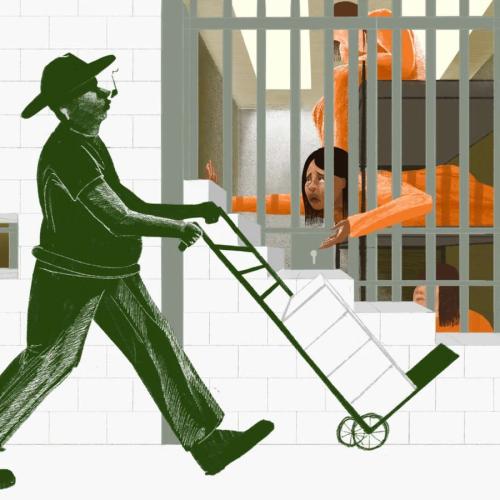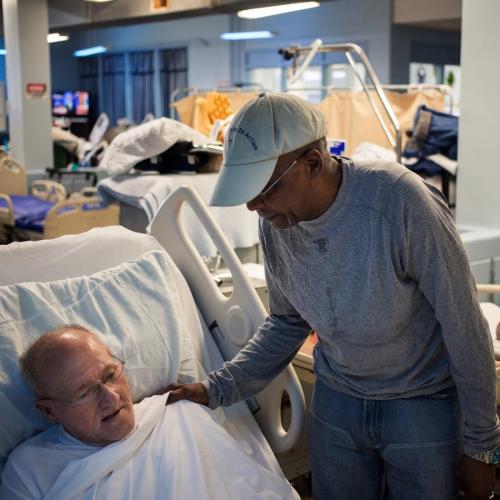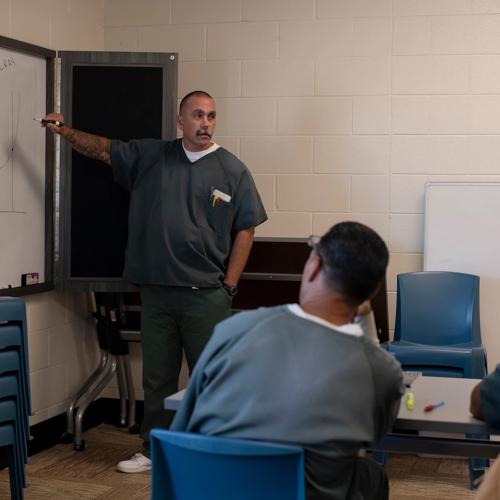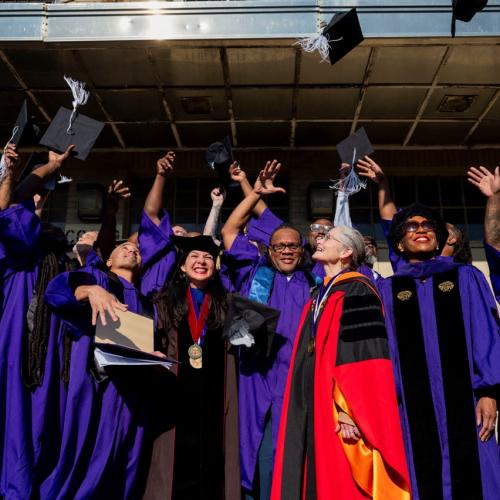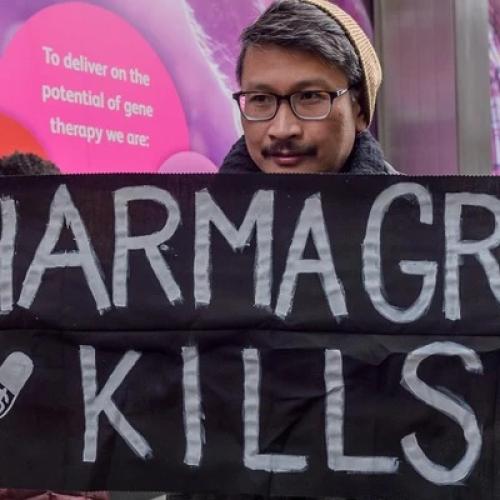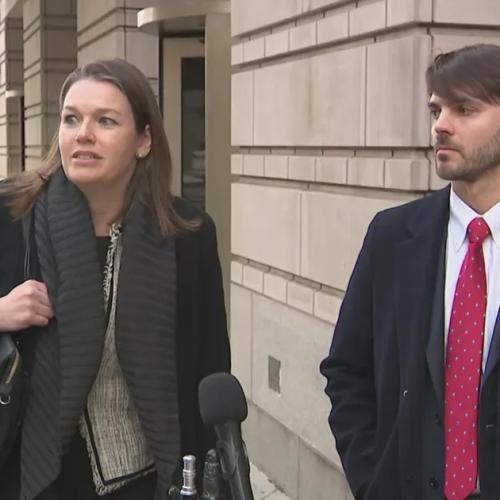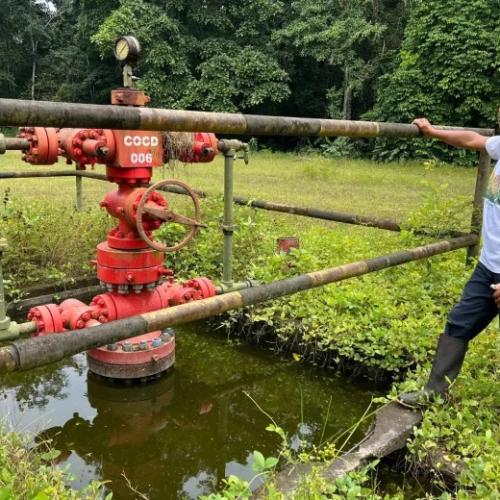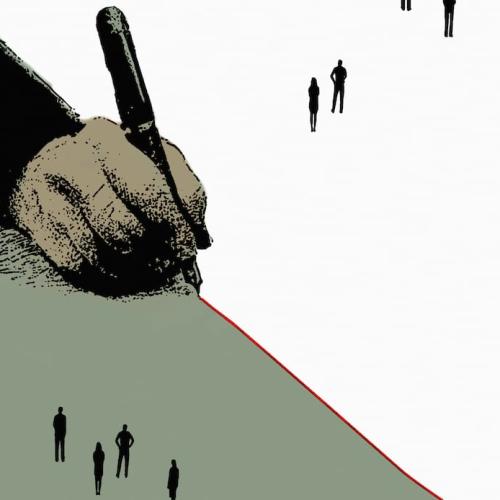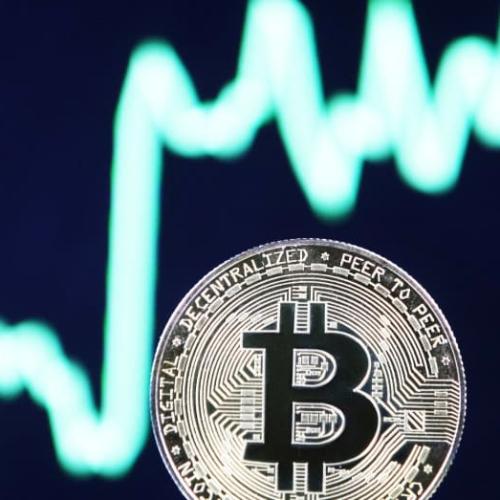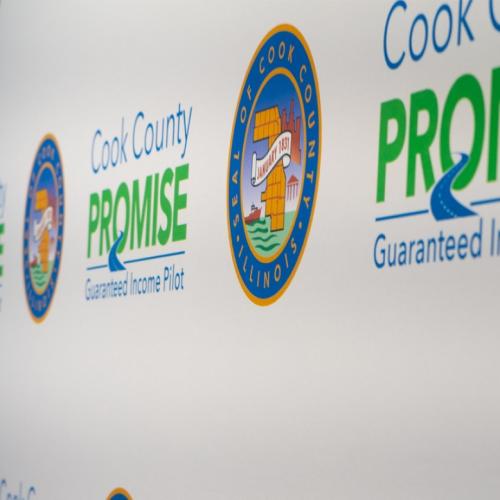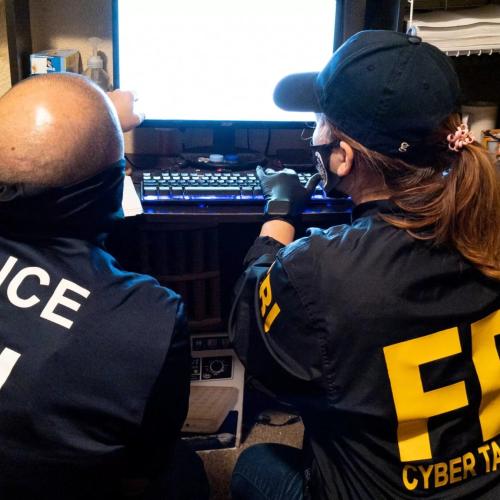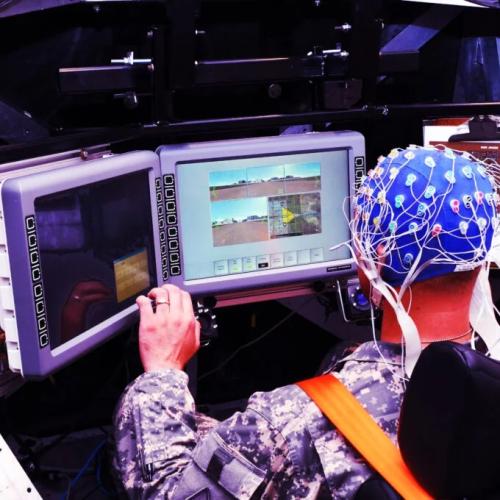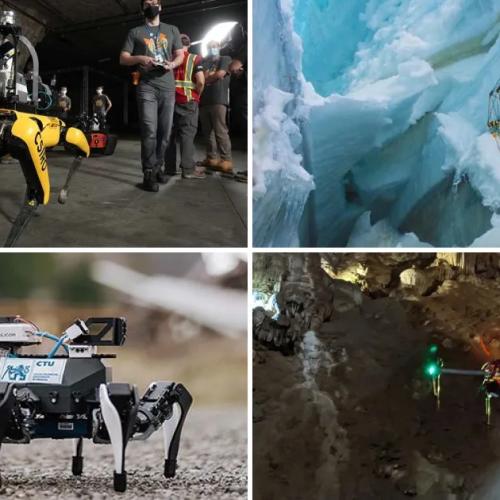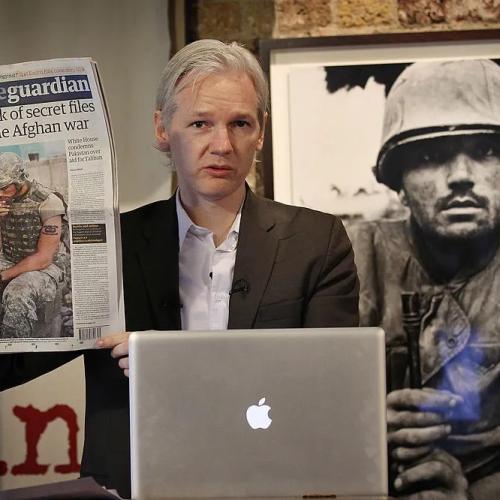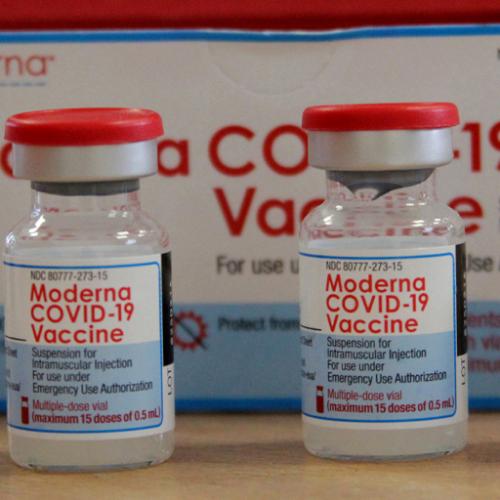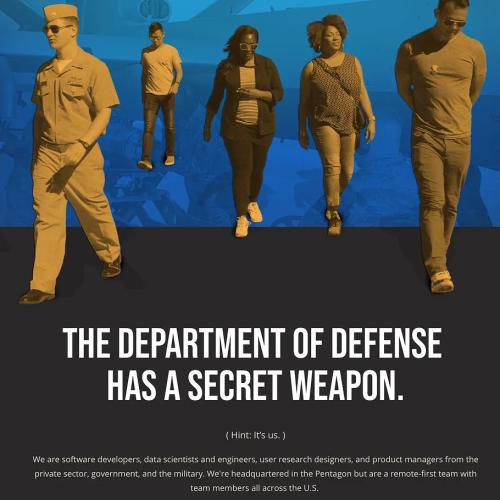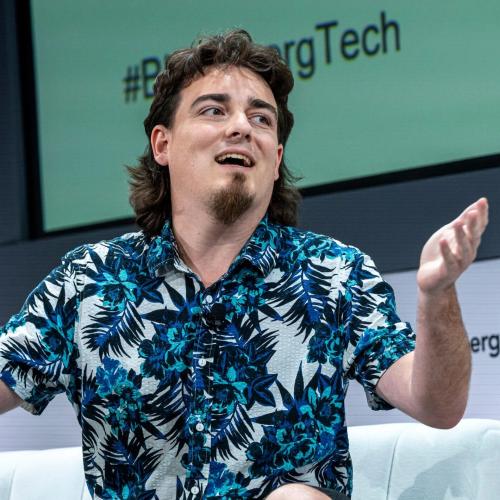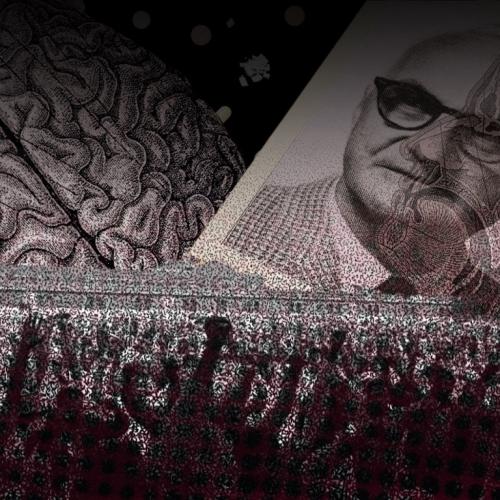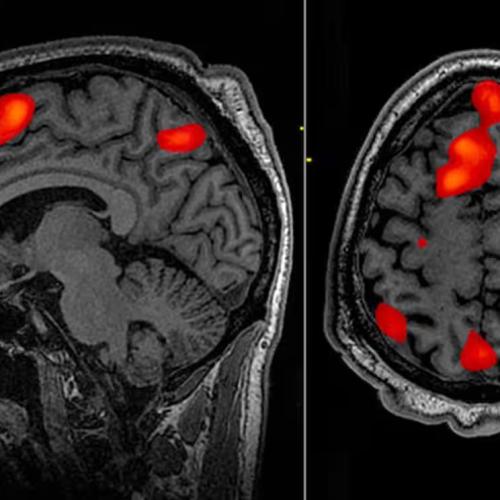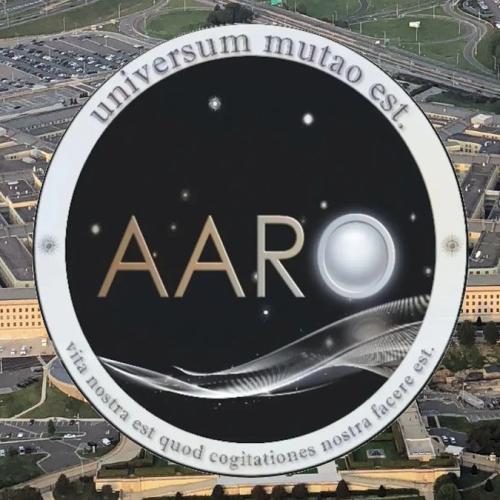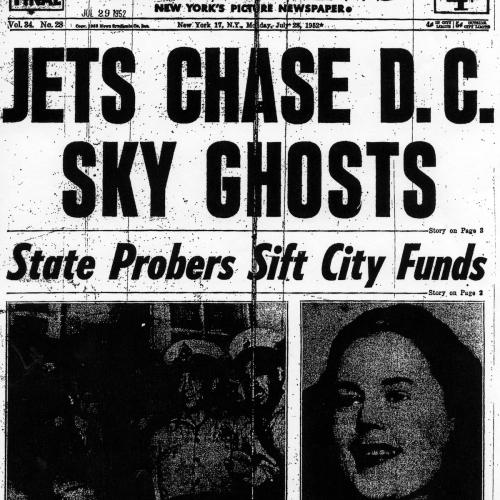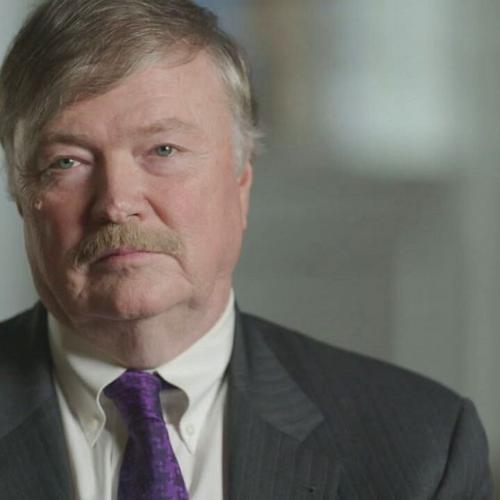Corruption in Science Media Articles
Below are key excerpts of revealing news articles on science corruption from reliable news media sources. If any link fails to function, a paywall blocks full access, or the article is no longer available, try these digital tools.
A healthcare firm is seeking to silence a Danish academic from expressing doubts about one of its products by using Englands draconian libel laws. Two years ago in a conference room in the Randolph hotel in Oxford, Henrik Thomsen ... one of Europes leading radiologists, revealed how patients treated at his hospital had subsequently contracted a rare and potentially fatal disease. Thomsen and other doctors at his Copenhagen University hospital were baffled as to why 20 kidney patients who had been given routine scans were afflicted by a disorder nephrogenic systemic fibrosis (NSF) in which the skin gradually swells, thickens and tightens. Some sufferers were confined to wheelchairs. At least one died. There was no known cure. It was confirmed that all those who had fallen ill with NSF had been given the same drug in advance of a magnetic resonance imaging (MRI) scan. Omniscan was used to enhance the images produced by the scan. The product was sold around the world and was manufactured by GE Healthcare, a subsidiary of General Electric, one of the worlds largest corporations. Thomsen ... now refuses to speak anywhere in England on the possible risks of Omniscan. The reason is that he faces another kind of storm: GE Healthcare is suing him in the High Court for libel. GE has already racked up costs of more than 380,000 pursuing the respected academic. Thomsen will have to pay the firms costs if he loses the case.
Note: For lots more on corporate corruption from reliable sources, click here.
A new report finds that the Centers for Disease Control and Prevention did a poor job of screening medical experts for financial conflicts when it hired them to advise the agency on vaccine safety. Most of the experts who served on advisory panels in 2007 to evaluate vaccines for flu and cervical cancer had potential conflicts that were never resolved, the report said. Some were legally barred from considering the issues but did so anyway. In the report ... Daniel R. Levinson, the inspector general of the Department of Health and Human Services, found that the centers failed nearly every time to ensure that the experts adequately filled out forms confirming they were not being paid by companies with an interest in their decisions. The report found that 64 percent of the advisers had potential conflicts of interest that were never identified or were left unresolved by the centers. Thirteen percent failed to have an appropriate conflicts form on file at the agency at all, which should have barred their participation in the meetings entirely, Mr. Levinson found. And 3 percent voted on matters that ethics officers had already barred them from considering.
Note: For lots more on corporate and government corruption from reliable sources, click here and here.
In the United Kingdom ... the countrys top drug adviser was recently fired for publicly criticizing his own governments drug laws. The adviser, Dr. David Nutt, said in a lecture that alcohol is more hazardous than many outlawed substances, and that the United Kingdom might be making a mistake in throwing marijuana smokers in jail. His comments werent the idle musings of a reality-insulated professor in a policy job. They were based on ... a scientifically compiled ranking of drugs, assembled by specialists in chemistry, health, and enforcement, published in a prestigious medical journal two years earlier. The list, printed as a chart with the unassuming title Mean Harm Scores for 20 Substances, ranked a set of common drugs, both legal and illegal, in order of their harmfulness - how addictive they were, how physically damaging, and how much they threatened society. Overall, alcohol is far worse than many illegal drugs. So is tobacco. Smoking pot is less harmful than drinking, and LSD is less damaging yet. Nutt says he didnt see himself as promoting drug use or trying to subvert the government. He was pressing the point that a government policy, especially a health-related one like a drug law, should be grounded in factual information.
Note: For lots more on key health issues, click here.
The scientific integrity of medical research has been clouded in recent years by articles that were drafted by drug company-sponsored ghostwriters and then passed off as the work of independent academic authors. Yet the leading medical journals have continued to rely largely on an honor system of disclosure to detect such potential bias, asking authors to voluntarily report any industry ties or contributors to their manuscripts. But now, in light of recently released evidence that some drug makers have gone to great lengths to turn scientific articles into marketing vehicles for their products, some influential medical editors are cracking down on industry-financed ghostwriting. These editors are demanding that journals impose tougher disclosure policies for academic authors and that the journals enforce their own rules by actively investigating the provenance of manuscripts and by punishing authors who play down extensive contributions by ghostwriters. Calling for a zero tolerance policy, the editors of the medical journal PLoS Medicine, from the Public Library of Science, called for journals to identify and retract ghostwritten articles and banish their authors. Authors found to have not declared such interest should be banned from any subsequent publication in the journal and their misconduct reported to their institutions. In the past, researchers have raised allegations of ghostwriting in articles about quality-of-life drugs like antidepressants, painkillers and diet pills. But the situation has become more serious this year after a few editors said they had discovered ghostwriting in manuscripts about life-and-death products like cancer and hematology drugs.
Note: For background on the prevalence of ghostwriting in major medical journals, click here and here and here.
Researchers at the Royal Institute of Technology (KTH) in Stockholm have managed to prove that fossils from animals and plants are not necessary for crude oil and natural gas to be generated. The findings are revolutionary since this means, on the one hand, that it will be much easier to find these sources of energy and, on the other hand, that they can be found all over the globe. Using our research we can even say where oil could be found in Sweden, says Vladimir Kutcherov, a professor at the Division of Energy Technology at KTH. Together with two research colleagues, Vladimir Kutcherov has simulated the process involving pressure and heat that occurs naturally in the inner layers of the earth, the process that generates hydrocarbon, the primary component in oil and natural gas. According to Vladimir Kutcherov, the findings are a clear indication that the oil supply is not about to end, which researchers and experts in the field have long feared. He adds that there is no way that fossil oil, with the help of gravity or other forces, could have seeped down to a depth of 10.5 kilometers in the state of Texas, for example, which is rich in oil deposits. As Vladimir Kutcherov sees it, this is further proof, alongside his own research findings, of the genesis of these energy sources that they can be created in other ways than via fossils. This has long been a matter of lively discussion among scientists. There is no doubt that our research proves that crude oil and natural gas are generated without the involvement of fossils. All types of bedrock can serve as reservoirs of oil, says Vladimir Kutcherov.
Note: The research work of Kutcherov and others on this topic was recently published in the scientific journal Nature Geoscience. For more reports from reliable sources on key new energy discoveries, click here.
Doctors and psychologists the CIA employed to monitor its "enhanced interrogation" of terror suspects came close to, and may even have committed, unlawful human experimentation, a medical ethics watchdog has alleged. Physicians for Human Rights (PHR), a not-for-profit group that has investigated the role of medical personnel in alleged incidents of torture at Guantnamo, Abu Ghraib, Bagram and other US detention sites, accuses doctors of being far more involved than hitherto understood. PHR says health professionals participated at every stage in the development, implementation and legal justification of what it calls the CIA's secret "torture programme". The most incendiary accusation of PHR's latest report, Aiding Torture, is that doctors actively monitored the CIA's interrogation techniques with a view to determining their effectiveness, using detainees as human subjects without their consent. The report concludes that such data gathering was "a practice that approaches unlawful experimentation". Human experimentation without consent has been prohibited in any setting since 1947 [with] the Nuremberg Code, which resulted from the prosecution of Nazi doctors. In April, a leaked report from the International Committee of the Red Cross found that medical staff employed by the CIA had been present during waterboarding, and had even used what appeared to be a pulse oxymeter, placed on the prisoner's finger to monitor his oxygen saturation during the procedure. PHR is calling for an official investigation into the role of doctors in the CIA's now widely discredited programme. It wants to know exactly how many doctors participated, what they did, what records they kept and the science that they applied.
Note: To watch a video of a Democracy Now! segment on the PHR report, click here. For astounding information on how MDs participated in the CIA's mind control experiments in the past, click here.
A recent analysis of the 2007 financial markets of 48 countries has revealed that the world's finances are in the hands of just a few mutual funds, banks, and corporations. This is the first clear picture of the global concentration of financial power, and ... the worldwide financial system's vulnerability. A pair of physicists at the Swiss Federal Institute of Technology in Zurich did a physics-based analysis of the world economy as it looked in early 2007. Stefano Battiston and James Glattfelder extracted the information from the tangled yarn that links 24,877 stocks and 106,141 shareholding entities in 48 countries, revealing what they called the "backbone" of each country's financial market. The most pared-down backbones exist in Anglo-Saxon countries, including the U.S., Australia, and the U.K.. The biggest fish was the Capital Group Companies, with major stakes in 36 of the 48 countries studied. The results raise questions of where and when a company could choose to exert this influence. Glattfelder added that the internationalism of these powerful companies makes it difficult to gauge their economic influence. "[With] company structures which are so big and spanning the globe, it's hard to see what they're up to and what they're doing, he said. Large, sparse networks dominated by a few major companies could also be more vulnerable, he said. "In network speak, if those nodes fail, that has a big effect on the network." The results will be published in an upcoming issue of the journal Physical Review E.
Note: For a treasure trove of revelations about the realities of the global financial structure, click here.
Scientists in Israel have demonstrated that it is possible to fabricate DNA evidence, undermining the credibility of what has been considered the gold standard of proof in criminal cases. The scientists fabricated blood and saliva samples containing DNA from a person other than the donor of the blood and saliva. They also showed that if they had access to a DNA profile in a database, they could construct a sample of DNA to match that profile without obtaining any tissue from that person. You can just engineer a crime scene, said Dan Frumkin, lead author of the paper, which has been published online by the journal Forensic Science International: Genetics. Any biology undergraduate could perform this. Dr. Frumkin is a founder of Nucleix, a company based in Tel Aviv that has developed a test to distinguish real DNA samples from fake ones that it hopes to sell to forensics laboratories. The planting of fabricated DNA evidence at a crime scene is only one implication of the findings. A potential invasion of personal privacy is another. Using some of the same techniques, it may be possible to scavenge anyones DNA from a discarded drinking cup or cigarette butt and turn it into a saliva sample that could be submitted to a genetic testing company that measures ancestry or the risk of getting various diseases. Tania Simoncelli, science adviser to the American Civil Liberties Union, said the findings were worrisome. DNA is a lot easier to plant at a crime scene than fingerprints, she said. Were creating a criminal justice system that is increasingly relying on this technology.
Note: For lots more on government threats to civil liberties, click here.
President Obama's "science czar," John Holdren, once floated the idea of forced abortions, "compulsory sterilization," and the creation of a "Planetary Regime" that would oversee human population levels and control all natural resources as a means of protecting the planet -- controversial ideas his critics say should have been brought up in his Senate confirmation hearings ... as director of the White House's Office of Science and Technology Policy. It appears that the senators who scrutinized him had no knowledge of the contents of a textbook he co-authored in 1977, Ecoscience: Population, Resources, Environment. The 1,000-page course book, which was co-written with environmental activists Paul and Anne Ehrlich, discusses and in one passage seems to advocate totalitarian measures to curb population growth, which it says could cause an environmental catastrophe. Holdren and his co-authors spend a portion of the book discussing possible government programs that could be used to lower birth rates. Holdren's office issued a statement to FOXNews.com denying that the ecologist has ever backed any of the measures discussed in his book. Holdren's co-authors, Paul and Anne Ehrlich, said in a statement that they were "shocked at the serious mischaracterization of our views and those of John Holdren," caused by what they called misreadings of the book.
It's not often that a place like Harvard Medical School gets an F — particularly when rivals Stanford, Columbia and the University of Pennsylvania are pulling A's and B's. But that's what happened recently when the members of the increasingly influential — and increasingly noisy — American Medical Student Association (AMSA) decided to grade 150 med schools on just how much money and gifts they're collecting from drug companies. The more goodies a school is vacuuming up from the industry, the worse its grade. It turns out that many professors and instructors are, legally, on the dole as well, and students are beginning to worry that what they're being taught is just as one-sided as what patients are being prescribed. Harvard, at the moment, is at the center of it. Of Harvard's 8,900 professors and lecturers, 1,600 admit that either they or a family member have had some kind of business link to drug companies — sometimes worth hundreds of thousands of dollars — that could bias their teaching or research. Additionally, pharma contributed more than $11.5 million to the school last year for research and continuing-education classes. And while Harvard might be the highest-profile name that was posted on AMSA's grade list, it was hardly the only one that flunked: 40 out of the 150 schools surveyed received F's; only 22 got an A or B. Harvard has convened a 19-member committee ... to review its pharma policy, though the university is hedging on whether it actually plans to change the way it operates.
Note: For more along these lines, see concise summaries of deeply revealing news articles on Big Pharma corruption from reliable major media sources.
The Nazi doctor Josef Mengele is responsible for the astonishing number of twins in a small Brazilian town, an Argentine historian has claimed. The steely hearted "Angel of Death", whose mission was to create a master race fit for the Third Reich, was the resident medic at Auschwitz from May 1943 until his flight in the face of the Red Army advance in January 1945. His task was to carry out experiments to discover by what method of genetic quirk twins were produced and then to artificially increase the Aryan birthrate for his master, Adolf Hitler. Now, a historian claims, Mengele's notorious experiments may have borne fruit. For years scientists have failed to discover why as many as one in five pregnancies in a small Brazilian town have resulted in twins most of them blond haired and blue eyed. But residents of Candido Godoi now claim that Mengele made repeated visits there in the early 1960s, posing at first as a vet but then offering medical treatment to the women of the town. Shuttling between Argentina, Paraguay and Brazil, he managed to evade justice before his death in 1979, but his dreams of a Nazi master race appeared unfulfilled. In a new book, Mengele [in Spanish], the Argentine historian Jorge Camarasa, a specialist in the post-war Nazi flight to South America, has painstakingly pieced together the Nazi doctor's mysterious later years. After speaking to the townspeople of Candido Godoi, he is convinced that Mengele continued his genetic experiments with twins with startling results.
Note: For more about Josef Mengele, and his relationship with the CIA, click here.
In a sweeping critique ... an expert panel of the National Research Council said the federal government was not doing enough to identify potential health and environmental risks from engineered nanomaterials. Nanomaterials are engineered on the scale of a billionth of a meter, perhaps 1/10,000 the width of a human hair. They are turning up in a range of items including consumer products like toothpaste and tennis rackets and industrial products like degreasers or adhesives. But some experts say they may pose health or environmental risks. For example, researchers in Scotland reported this year that carbon nanotubes may pose the same health risks as asbestos. Industry wants to run with it, said Andrew D. Maynard, chief science adviser to the Project on Emerging Nanotechnologies at the Woodrow Wilson Institute, who was the chairman of the panel. But he added, one of the big barriers at the moment is understanding how to use it safely. The panel analyzed the risk research strategy of the National Nanotechnology Initiative, the program to coordinate federal efforts in nanotechnology research and development. Its report concluded that the initiatives strategy does not present a vision, contain a clear set of goals, have a plan of action for how the goals are to be achieved, or describe mechanisms to review and evaluate funded research and assess whether progress has been achieved. An informal coalition of environmental and business organizations praised the report, saying that for three years they had been urging the federal government to do more to assess potential health and environmental effects of nanomaterials.
Note: For many important articles on health issues from reliable sources, click here.
People who remember when tobacco advertising was a prominent part of the media landscape ... probably recollect that actors like Barbara Stanwyck and athletes like Mickey Mantle routinely endorsed cigarettes. But how about doctors and other medical professionals, proclaiming the merits of various cigarette brands? Or politicians? Or children? Even Santa Claus? Those images some flabbergasting, even disturbing were also used by Madison Avenue to peddle tobacco products. An exhibit ... in New York presents cigarette ads from the 1920s through the early 1950s in an effort to demonstrate what has changed since then and what may not have. The exhibit is the brainchild of Dr. Robert K. Jackler of the Stanford School of Medicine. The very best artists and copywriters that money could buy would work on cigarette accounts, said Dr. Jackler. This era of over-the-top hucksterism went on for decades, he added, and it was all blatantly false. The genesis of the exhibit was an ad from around 1930 for Lucky Strike cigarettes, which shows a doctor above a headline proclaiming that 20,679 physicians say Luckies are less irritating. The Luckies doctor was joined in Dr. Jacklers collection of about 5,000 ads by scores of scientists and medical professionals doctors, dentists, nurses making statements that are now known to be patently untrue. Some of the claims being made in the ads, you did not have to be a scientist in a laboratory to dispute ... ads that smoking certain brands does not cause bad breath or can never stain your teeth.
Note: The Journal of the American Medical Association (JAMA) promoted cigarette ads for 20 years "after careful consideration of the extent to which cigarettes were used by physicians in practice." Will people, even highly respected members of society, bend the truth and even lie when paid enough? This article seems to answer that with a resounding yes. Is that still true today? For excerpts from many highly revealing articles showing it's as true now as ever, click here and here.
If recent scientific research on happiness -- and there has been quite a bit -- has proved anything, it's that happiness is not a goal. It's a process. Although our tendency to be happy or not is partly inborn, it's also partly within our control. And, perhaps more surprising, happiness brings success, not the other way around. Though many people think happiness is elusive, scientists have actually pinned it down and know how to get it. Sonja Lyubomirsky, a professor of psychology at UC Riverside and author of The How of Happiness: A Scientific Approach to Getting the Life You Want led controlled studies to determine what behaviors positively affect happiness, and has come up with at least 12 strategies that measurably increase levels. For instance, one strategy she's tested is the practice of gratitude. In her gratitude study, she had a group of 57 subjects express gratitude once a week in a journal. A second group of 58 expressed gratitude in a journal three times a week. And a control group of 32 did nothing. At the end of six weeks, she retested all three groups and found a significant increase in happiness in the first one. She and other researchers also recommend practicing forgiveness, savoring positive moments and becoming more involved in your church, synagogue or religious organization. "Not every strategy fits everyone," she says. "People need to try a few to find which ones work." Although Lyubomirsky likes to let people define happiness for themselves, clinically, she describes it as "a combination of frequent positive emotions, plus the sense that your life is good."
In the garage of his house, Frank Sanns spends nights tinkering with one of his prized possessions: a working nuclear-fusion reactor. Mr. Sanns, 51 years old, is part of a small subculture of gearheads, amateur physicists and science-fiction fans who are trying to build fusion reactors in their basements, backyards and home laboratories. Mr. Sanns ... believes he's on track to make fusion a viable power source. "I'm a dreamer," he says. Many of these hobbyists call themselves "fusioneers," and have formed a loosely knit community that numbers more than 100 world-wide. Getting into their elite "Neutron Club" requires building a tabletop reactor that successfully fuses hydrogen isotopes and glows like a miniature star. Only 42 have qualified; some have T-shirts that read "Fusion -- been there...done that." Called fusors and based on a 1960s design first developed by Philo T. Farnsworth, an inventor of television, the reactors are typically small steel spheres with wires and tubes sticking out and a glass window for looking inside. But they won't be powering homes anytime soon -- for now, fusors use far more energy than they produce. But the allure is strong. A fusion power plant would likely be fueled by deuterium and tritium, both isotopes of hydrogen that are in plentiful supply. Fusion advocates say reactors would be relatively clean, generating virtually no air pollution and little long-lived radioactive waste. Today's nuclear power plants, in contrast, are fission-based, meaning they split atoms and create a highly radioactive waste that can take millennia to decompose.
Note: How strange that this article seems to accept table-top nuclear fusion as a fact, when mainstream science supposedly debunked this possibility two decades ago. For lots more on infinite energy posibilities, click here.
The Pentagon's $50 million Minerva Research Initiative, named after the Roman goddess of wisdom and warriors, will fund social science research deemed crucial to national security. Initial proposals were due July 25, and the first grants are expected to be awarded by year's end. But the Network of Concerned Anthropologists ... said dependence on Pentagon funding could make universities an "instrument rather than a critic of war-making." In a May 28 letter to federal officials, the American Anthropological Association said that ... its members are "deeply concerned that funding such research through the Pentagon may pose a potential conflict of interest." David Price, an anthropologist at St. Martin's University in Lacey, Wash., and the author of a book on anthropological intelligence in World War II, [said] the Pentagon effort is flawed. "It sets up sort of a Soviet system, or top-down system," Price said. "If you look at the big picture, this will not make us smarter -- this will make us much more narrow. It will only look at problems Defense wants us to in a narrow way." Recently, the Army's Human Terrain System has embedded social scientists in military units in Iraq and Afghanistan with the aim of helping commanders understand local culture and customs. The project has drawn criticism from many academics. Two scholars have been killed. The Network of Concerned Anthropologists, which describes itself as an advocate for ethical anthropology, said the research topics could "contribute to creating more national and human insecurity by trafficking in the construction of . . . a connection between Islam and violence."
Note: For many revealing reports on government corruption from reliable sources, click here.
The Environmental Protection Agency is telling its pollution enforcement officials not to talk with congressional investigators, reporters and even the agency's own inspector general, according to an internal e-mail provided to The Associated Press. The June 16 message instructs 11 managers in the EPA's Office of Enforcement and Compliance Assurance, the branch of the agency charged with making sure environmental laws are followed, to remind their staff members to keep quiet. "If you are contacted directly by the IG's office or GAO requesting information of any kind . . . please do not respond to questions or make any statements," reads the e-mail sent by Robbi Farrell, the division's chief of staff. Instead, staff members should forward inquiries to a designated EPA representative, the memo says. Public Employees for Environmental Responsibility obtained the e-mail and provided it to the AP. The group is a nonprofit alliance of local, state and federal professionals. Jeff Ruch, its executive director, said ... the e-mail reinforces a "bunker mentality" within EPA under the Bush administration. "The clear intention behind this move is to chill the cubicles by suppressing any uncontrolled information." The Office of Inspector General said it did not approve of the language in the e-mail. "All EPA officials and employees are required to cooperate with OIG," the statement said. "This cooperation includes providing the OIG full and unrestricted access to EPA documents, records, and personnel."
Note: For many revealing reports on government secrecy from major media sources, click here.
They're some of the most trusted voices in the defense of vaccine safety: the American Academy of Pediatrics, Every Child By Two, and pediatrician Dr. Paul Offit. But CBS News has found these three have something more in common - strong financial ties to the industry whose products they promote and defend. The vaccine industry gives millions to the Academy of Pediatrics for conferences, grants, medical education classes and even helped build their headquarters. The totals are kept secret, but public documents reveal bits and pieces. A $342,000 payment from Wyeth, maker of the pneumococcal vaccine - which makes $2 billion a year in sales. A $433,000 contribution from Merck, the same year the academy endorsed Merck's HPV vaccine - which made $1.5 billion a year in sales. Every Child By Two, a group that promotes early immunization for all children, admits the group takes money from the vaccine industry, too - but wouldn't tell us how much. Then there's Paul Offit, perhaps the most widely-quoted defender of vaccine safety. He's gone so far as to say babies can tolerate "10,000 vaccines at once." In fact, he's a vaccine industry insider. Offit holds a $1.5 million dollar research chair at Children's Hospital, funded by Merck. He holds the patent on an anti-diarrhea vaccine he developed with Merck. And future royalties for the vaccine were just sold for $182 million cash.
Note: An excellent report endorsed by many respected doctors and nurses reveals the serious risks of vaccines. Read an incisive list of questions regarding vaccines that are rarely raised by the media. The report accessible on this US government webpage states, "Since 1988, over 24,200 petitions have been filed with the VICP [Vaccine Injury Compensation Program] ... with 8,162 of those determined to be compensable. Total compensation paid over the life of the program is approximately $4.5 billion." Why isn't that huge price tag for vaccine injuries being talked about?
Most parents have never heard of him, but Joseph Biederman of Harvard may be the United States' most influential doctor when it comes to determining whether their children are normal or mentally ill. In 1996, for example, Biederman suggested that drugs like Ritalin might serve 10 percent of American kids for Attention Deficit Hyperactivity Disorder. By 2004, one in nine 11-year-old boys was taking the drug. Biederman and his team also are more responsible than anyone for a child bipolar epidemic sweeping America (and no other country) that has 2-year-olds on three or four psychiatric drugs. The science of children's psychiatric medications is so primitive and Biederman's influence so great that when he merely mentions a drug during a presentation, tens of thousands of children within a year or two will end up taking that drug, or combination of drugs. This happens in the absence of a drug trial of any kind - instead, the decision is based upon word of mouth among the 7,000 child psychiatrists in America. That's why [the] recent revelation that Biederman did not declare $1.6 million in drug company consulting fees is so important, scary and tragic. American medicine, with psychiatry the most culpable, has fallen back to a time more than 100 years ago. Now once again, drug company money is corrupting medical practice and the maintenance of our country's health. Virtually all doctors who receive drug company money say they are not influenced, but every independent study examining the effects of such money says they are.
Note: For lots more on health issues from reliable, verifiable sources, click here.
It seemed an ideal marriage, a scientific partnership that would attack mental illness from all sides. Psychiatrists would bring ... their expertise and clinical experience, drug makers would provide their products and the money to run rigorous studies, and patients would get better medications, faster. But now the profession itself is under attack in Congress, accused of allowing this relationship to become too cozy. After a series of stinging investigations of individual doctors arrangements with drug makers, Senator Charles E. Grassley, Republican of Iowa, is demanding that the American Psychiatric Association, the fields premier professional organization, give an accounting of its financing. "I have come to understand that money from the pharmaceutical industry can shape the practices of nonprofit organizations that purport to be independent in their viewpoints and actions," Mr. Grassley said. In 2006 ... the drug industry accounted for about 30 percent of the associations $62.5 million in financing. One of the doctors named by Mr. Grassley is the associations president-elect, Dr. Alan F. Schatzberg of Stanford, whose $4.8 million stock holdings in a drug development company raised the senators concern. Commercial arrangements are rampant throughout medicine. In the past two decades, drug and device makers have paid tens of thousands of doctors and researchers of all specialties. Worried that this money could taint doctors research plans or clinical judgment, government agencies, medical journals and universities have been forced to look more closely at deal details.
Note: For many powerful reports of corporate corruption, click here.
Important Note: Explore our full index to key excerpts of revealing major media news articles on several dozen engaging topics. And don't miss amazing excerpts from 20 of the most revealing news articles ever published.













